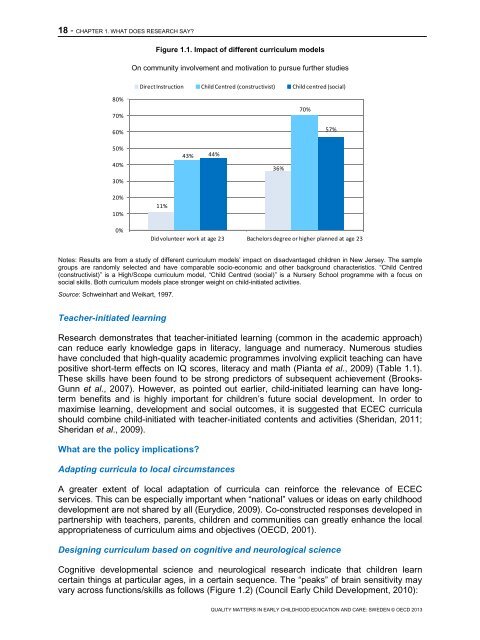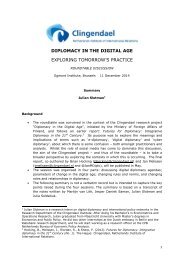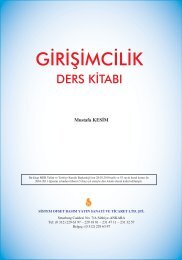SWEDEN%20policy%20profile%20-%20published%2005-02-2013
SWEDEN%20policy%20profile%20-%20published%2005-02-2013
SWEDEN%20policy%20profile%20-%20published%2005-02-2013
Create successful ePaper yourself
Turn your PDF publications into a flip-book with our unique Google optimized e-Paper software.
18 - CHAPTER 1. WHAT DOES RESEARCH SAY?<br />
80%<br />
70%<br />
60%<br />
50%<br />
40%<br />
30%<br />
20%<br />
10%<br />
0%<br />
Figure 1.1. Impact of different curriculum models<br />
On community involvement and motivation to pursue further studies<br />
Direct Instruction Child Centred (constructivist) Child centred (social)<br />
11%<br />
43%<br />
44%<br />
36%<br />
70%<br />
57%<br />
Did volunteer work at age 23 Bachelors degree or higher planned at age 23<br />
Notes: Results are from a study of different curriculum models’ impact on disadvantaged children in New Jersey. The sample<br />
groups are randomly selected and have comparable socio-economic and other background characteristics. “Child Centred<br />
(constructivist)” is a High/Scope curriculum model, “Child Centred (social)” is a Nursery School programme with a focus on<br />
social skills. Both curriculum models place stronger weight on child-initiated activities.<br />
Source: Schweinhart and Weikart, 1997.<br />
Teacher-initiated learning<br />
Research demonstrates that teacher-initiated learning (common in the academic approach)<br />
can reduce early knowledge gaps in literacy, language and numeracy. Numerous studies<br />
have concluded that high-quality academic programmes involving explicit teaching can have<br />
positive short-term effects on IQ scores, literacy and math (Pianta et al., 2009) (Table 1.1).<br />
These skills have been found to be strong predictors of subsequent achievement (Brooks-<br />
Gunn et al., 2007). However, as pointed out earlier, child-initiated learning can have longterm<br />
benefits and is highly important for children’s future social development. In order to<br />
maximise learning, development and social outcomes, it is suggested that ECEC curricula<br />
should combine child-initiated with teacher-initiated contents and activities (Sheridan, 2011;<br />
Sheridan et al., 2009).<br />
What are the policy implications?<br />
Adapting curricula to local circumstances<br />
A greater extent of local adaptation of curricula can reinforce the relevance of ECEC<br />
services. This can be especially important when “national” values or ideas on early childhood<br />
development are not shared by all (Eurydice, 2009). Co-constructed responses developed in<br />
partnership with teachers, parents, children and communities can greatly enhance the local<br />
appropriateness of curriculum aims and objectives (OECD, 2001).<br />
Designing curriculum based on cognitive and neurological science<br />
Cognitive developmental science and neurological research indicate that children learn<br />
certain things at particular ages, in a certain sequence. The “peaks” of brain sensitivity may<br />
vary across functions/skills as follows (Figure 1.2) (Council Early Child Development, 2010):<br />
QUALITY MATTERS IN EARLY CHILDHOOD EDUCATION AND CARE: SWEDEN © OECD <strong>2013</strong>








